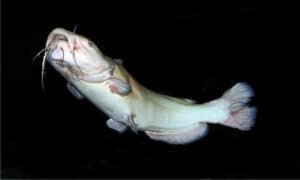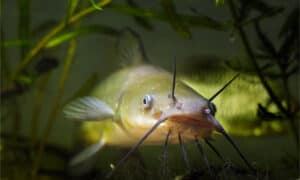Blue catfish are huge fish commonly found in competitions. They are similar to other catfish species, but they have a unique blue or grey tone. These fish can grow up to 5 feet long and weigh nearly 100 pounds! Imagine trying to use all of your strength and weight to pull that fish up!

The Mississippi River is home to hundreds, if not thousands, of blue catfish. It is a major global river and serves a lot of purposes for North America. If you are curious about discovering the largest blue catfish ever caught in the Mississippi River, read on!
What is the Largest Blue Catfish Ever Caught in the Mississippi River?
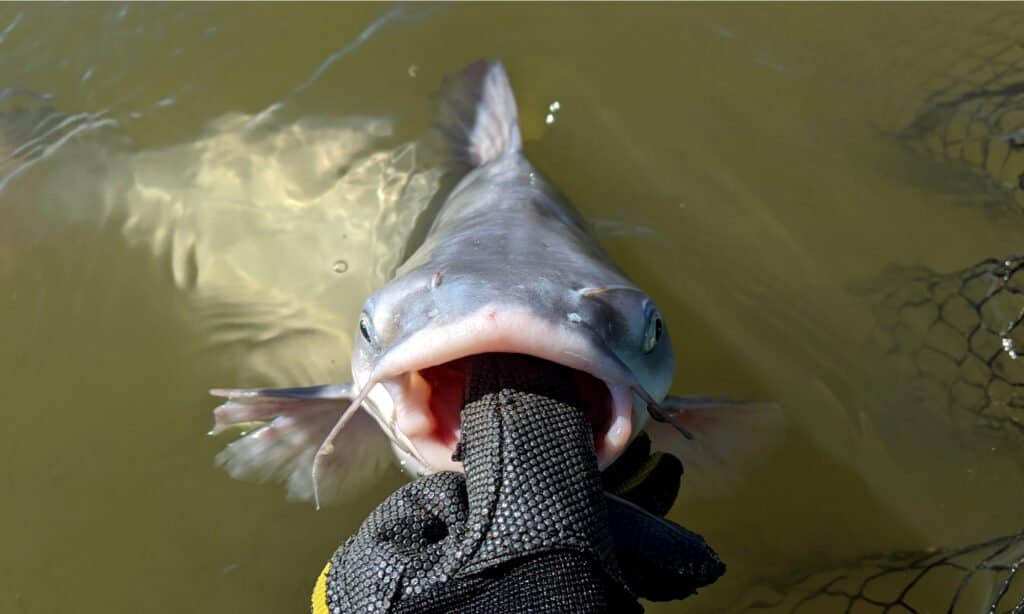
In the Mississippi River, Eugene Cronley caught a gigantic catfish weighing 131 pounds.
©M Huston/Shutterstock.com
On April 7th, 2022, an excited fisherman caught the largest blue catfish in the Mississippi River. The fish weighed an astonishing 131 pounds! Can you imagine the strength you would need to pull one out of the water? Not only is this the largest blue catfish caught in the Mississippi River, but it is also the largest in the state.
Eugene Cronley spent a minimum of thirty minutes tugging on his line until he was able to pull the massive fish out of the 90-foot fishing hole. The fish he caught was 56.6 inches long. Cronley believes it weighed at least 138 pounds, but when icing the fish, it lost weight.
What is the Largest Blue Catfish Ever Caught in the World?
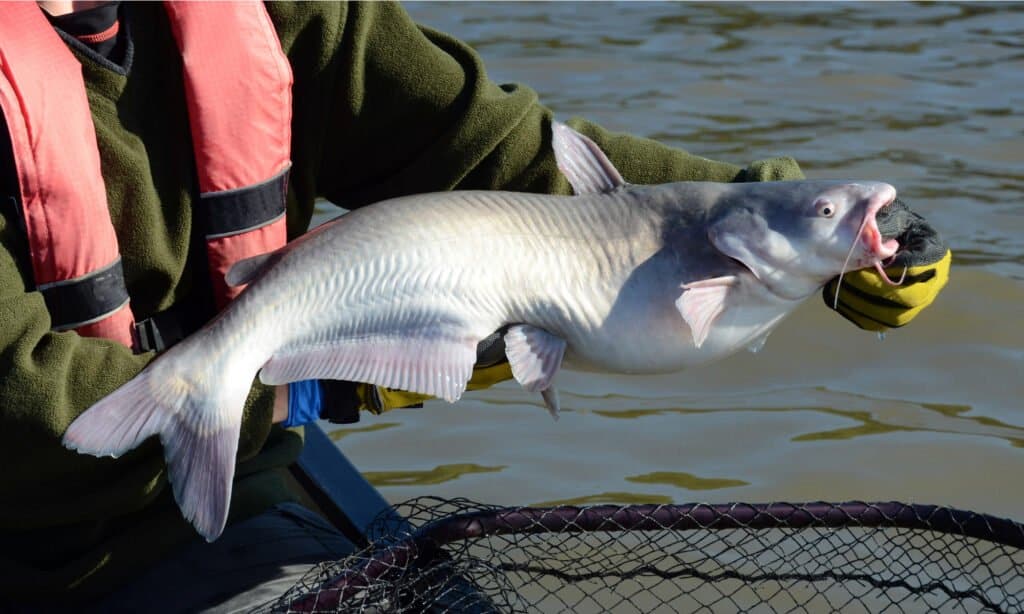
The largest blue catfish ever caught in the world weighed 143 pounds.
©M Huston/Shutterstock.com
Cronley was so close to beating the record for the largest blue catfish ever caught in the world! However, the actual title goes to Richard Nicholas Anderson, who caught a monstrous 143-pound blue catfish in Kerr Lake, Virginia, in 2011.
If you want to continue being blown away by these behemoths, consider that the average blue catfish only weighs about 82 pounds. Blue catfish are the largest North American catfish species.
Where Can You Find Blue Catfish?
Blue catfish are native to the Mississippi River, along with other North American rivers and lakes. Fishers travel to Mississippi, Missouri, Ohio, and Rio Grande river basins each year in hopes of catching multiple gigantic blue catfish.
Blue catfish are hunted for sport and food. If you do not live near the four areas mentioned above, you might still have a chance of catching a blue catfish. In at least 20 other states, rivers and lakes are stocked with these fish.
While you can find blue catfish in the Chesapeake Bay, they are an invasive species. They have minimal predators since they are fast and large! They affect the ecosystem of the Chesapeake Bay by consuming blue crab, striped bass, and Atlantic sturgeon. They adapt well to the Chesapeake Bay as they can travel from freshwater to brackish water with ease.
The Diet of the Blue Catfish

Blue Catfish are mainly carnivores but will consume most anything then encounter in their environment.
©Billy Ogle/Flickr – License
While most fish in the world are not top predators, blue catfish have a lot of advantages. Their large size makes them difficult targets, and their quick speeds help them feast on smaller fish and prey.
Most blue catfish consume whatever is in their environment. They are not picky eaters. However, with age and size, their diets change slightly. For example, younger and smaller blue catfish will only hunt plankton and other small organisms.
Blue catfish are also mainly carnivores and opportunists. They hunt vulnerable prey in deep waters. These large fish can also consume water insects and clams. Adult blue catfish living in the Mississippi River will eat mussels and other smaller catfish.
Blue Catfish Lifespan
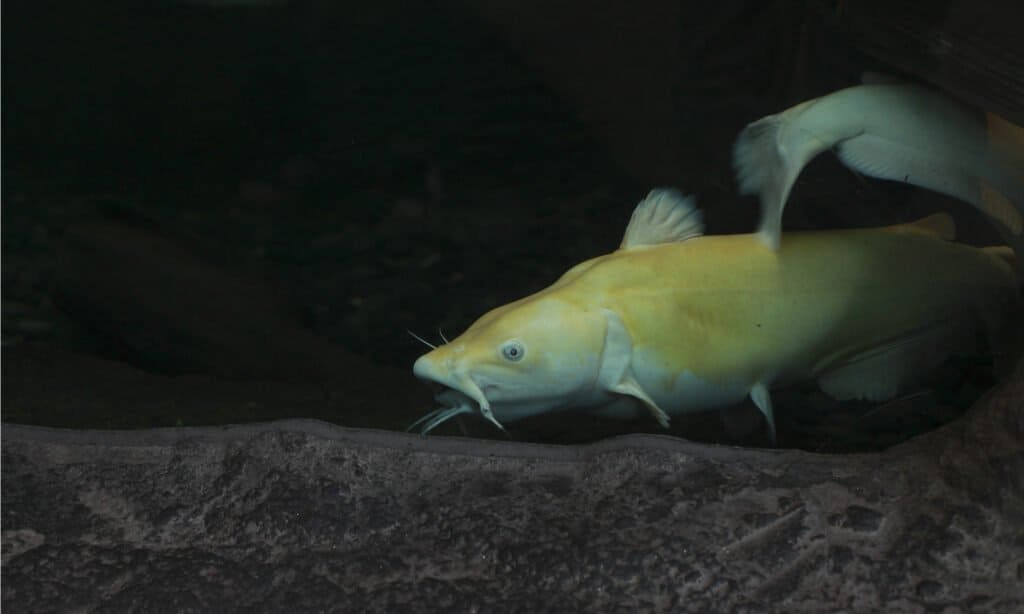
Though their name may suggest otherwise, not all blue catfish are blue.
©Brandy McKnight/Shutterstock.com
On average, blue catfish live about 9 or 10 years in the wild. Some older specimens have been recorded as living up to 25 years. Blue Catfish populations grow nearly exponentially once introduced to an area, as females of an average weight of 30 pounds can produce over 78,000 eggs during one breeding season, with larger females being able to produce even more. This means blue catfish can absolutely devastate local populations of less aggressive fish, so anglers are encouraged to reel in as many blue catfish as they can!
What Other Fish Are in the Mississippi River?
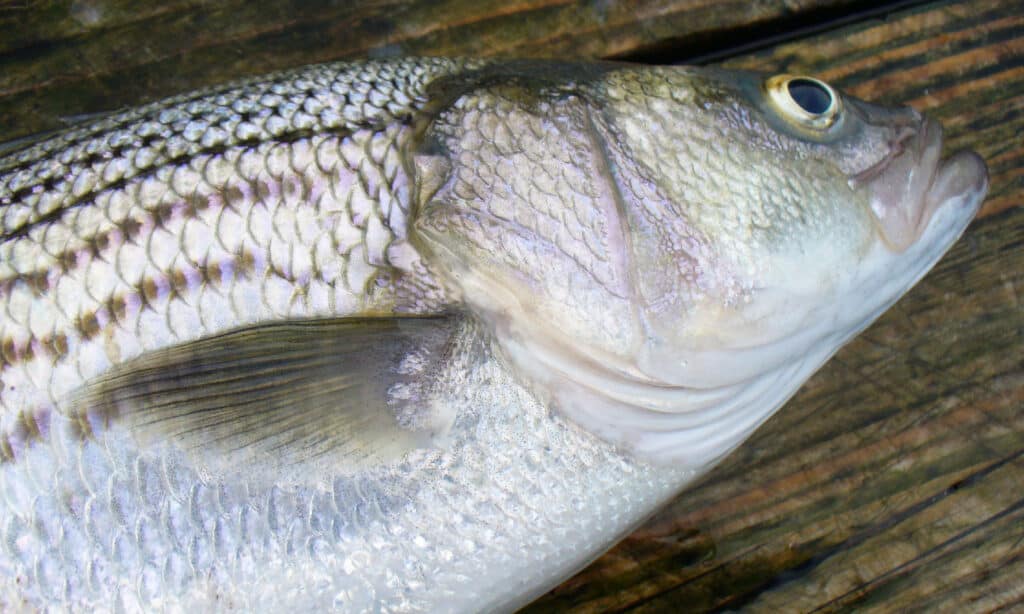
Striped bass are common fish in the Mississippi River.
©iStock.com/Coast-to-Coast
The Mississippi River is home to at least 188 known fish species. They are diverse and travel from river to lake! A lot of the fish in these waters are actually invasive. The Mississippi River is between 5.6 and 40 million years old. The river has a long history and a lot of diversity, which brings in invasive species.
Invasive or not, the most common fish found in the Mississippi river are the common carp, smallmouth bass, white bass, largemouth bass, catfish, American eels, walleye, and sturgeon.
The Mississippi River is also massive, meaning that in each section, there are different animals, fish, and plants. For instance, in the Upper Mississippi River, there are only about 119 species, not 188 that live in the waters. These species include northern pike, bluegill, and rainbow trout.
In the Mississippi River Delta, other non-aquatic animals live by the river bank. These animals are minks, bobcats, armadillos, and geese. Actually, nearly 8 million geese and ducks swim to and from the Mississippi River before leaving for Latin America.
The photo featured at the top of this post is © M Huston/Shutterstock.com
Thank you for reading! Have some feedback for us? Contact the AZ Animals editorial team.




